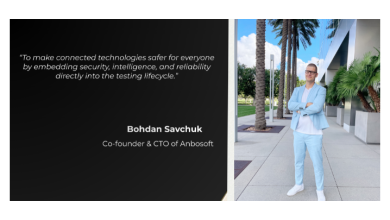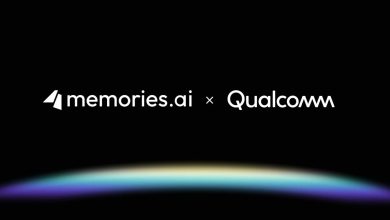As the country recovers from the COVID-19 pandemic, 2022 will be a year of recovery, and local authorities have a crucial role to play in leading this process. However, pressures continue to increase from the government to meet targets on climate change, improve health and social care and ensure that local infrastructure continues to meet increasing demand after the pandemic – all with restricted financial support. So how can technology help councils to address and meet these challenges? Nick Sacke, Head of IoT Solutions at Comms365 addresses some of the areas where IoT solutions can be rapidly rolled out, to not just overcome the challenges local authorities are facing, but to exceed them.
Sustainability and Climate Change
It is well known that across the United Kingdom, we are still producing masses of waste. With traditional and non-efficient processes still in place for collecting waste from public places and homes, it leaves councils and third-party contractors with a massive challenge.
But by investing in IoT technology, current ineffective processes can be easily and dramatically improved – from creating an optimally efficient route to collect waste to reduce carbon emissions, to emptying the right bins, at the right time, to further improve green objectives. Sensor technology, for example, can not only indicate how full a bin is, but can also detect temperature and motion, to see if somebody has thrown something flammable in the container, as well as the bin tipping over or being misplaced. This information can then be used to build a data profile, which will in turn, provide a more efficient collections schedule, and also identify hotspot areas with potential problems including fly-tipping.
Also, technology is becoming more efficient at determining different types of waste, particularly within underground storage, that can be useful for recycling efforts. By deploying IoT solutions, sensors can check how much glass is in a specific container, by comparing the sonic ‘signature’ via intelligent algorithms for different types of waste materials.
IoT can additionally help councils and third-party contractors plan in advance by knowing how much waste they will be collecting, by real-time monitoring of waste in the bin lorry itself, which can help the business to forecast cost and/or revenue. In turn, this has the potential to revolutionise payment models for contractors that are paid by weight.
With heavy regulations coming into play around air quality, and as we as a society strive towards a greener future, there is a need for local authorities to be more proactive and involved in their citizens’ health. By tracking environmental elements such as pollution levels, CO2 concentrations in offices and classrooms and chemical pollutants, environmental monitoring will become a big part of both our indoor and outdoor future.
Integrating Healthcare Services
The IoT healthcare market is expected to reach $188.2 billion by 2025, driven by the pandemic and increasing focus on patient-centric services. It’s clear that technology can transform industries, helping to reduce the burden on primary, acute and community care, as well as local councils. This was highlighted during the peak of the pandemic, with hospitals across the NHS implementing virtual clinics and remote monitoring technology to care for patients at home, while focusing on the ever-increasing COVID-19 cases. IoT technology enabled the use of health and care devices to collect valuable and real-time data to provide care to patients both in and out of hospital, while keeping them connected to health care professionals. The data collected helps to automate the mapping of activities into a profile around an individual, which can then be analysed and shared every day with the care organisation and local authority.
On-going patient health and vital signs can be recorded from home, such as heart rates, blood pressure and temperature, meaning clinicians’ time can be used elsewhere, enhancing the efficiency of existing processes. Specialists can be alerted when deterioration or health concerns are detected to allow for immediate intervention and deliver targeted care. Targeted intervention allows expansion of existing resources, and a rapid return on investment in care-assistive technology. By flagging any issues earlier and preventing the escalation of problems while the individual is at home, the need for them to go to the hospital for check-ups or treatment is mitigated in turn, reducing pressure on the public purse.
Technology can also be used to reduce inequality of or variation in care by identifying patients who may be at risk and have not seen their GP, or those who are in rural and remote areas, by providing access to interact with and monitor people in places that have been traditionally harder to reach. IoT technology has greatly improved accessibility and productivity in healthcare, while keeping patients safe and in the comfort of their own homes. This provides a mechanism to help the NHS with extending their care beyond the hospital, with another significant return on investment.
Local Infrastructure
With almost 50 shops closing a day on the high street during the first six months of 2021, and UK shopper footfall dropping, local authorities are now looking for alternative initiatives to encourage people back to the high street. If shoppers are looking to travel to physical stores once more, the parking experience should be painless – or else they’ll just return to the convenience of online shopping.
It’s estimated that motorists spend two months of their lifetime searching for a parking space. But what if this could be cut down with the use of technology? What if an individual’s mobile device was to alert them in real-time where a parking space was? Better yet, what if this space could be reserved, or set up a subscription model to park monthly? It’s all about data collection and a better, more informed use of this data. By incorporating electric charging and disabled bays, as well as the use of innovative technology, re-engineered and revitalised parking solutions will boost council revenue and provide more efficient and customer-pleasing services, in turn, regenerating the high street shopping experience
The rising cost of living, energy and fuel poverty
At the time of writing, inflation had just breached 5.5% and is on course to exceed 7%, another record. The price of oil and gas is rising, producing knock-on effects in the cost of raw materials and transportation costs, energy to heat the home, shopping basket prices, and more. The current economic climate is creating a punishing set of circumstances for all, but especially the elderly, those on low incomes and families where one or other partner has lost their job during the pandemic.
It has been reported in the media that in several cases the vulnerable are already making choices between heating or eating, which is of grave concern to all. Many of these vulnerable citizens live in local authority housing, so what can IoT technology do to assist?
Specifically, in the case of fuel poverty, monitoring temperature and environmental conditions in vulnerable households, together with energy consumption from the boiler will create a profile of energy use, highlighting which of the population require targeted interventions to assist with fuel bills and other assistance that the local authority has at its disposal. Smart radiator solutions can also be implemented to heat sections of the home that require it at different times of day, providing energy savings and improved living conditions. The IoT data collected could also profile and identify potential dwellings that have insulation, leaks, and other structural issues that affect the housing asset integrity and prioritise intervention. The business case for this type of technological intervention is already proven through current projects in the UK.
Conclusion
IoT technology is advancing to meet ever more imposing challenges and requirements. We’re not only seeing an uptake in interest and the use of these solutions, but the technology itself is becoming increasingly cost-effective, adaptable, and easier to deploy and maintain.
The COVID-19 crisis has prompted a greater need and priority for local councils to be forward-thinking in how digital technology and data can help towns recover now and strive in the future. The value of IoT technology and the real-time data it collects is being recognised, and will help to inform better decision-making, introduce early interventions and reduce the cost of changing practices. But for this to work in practice, there is a significant need for a cultural shift in the relationship local governments have with technology. The technological solutions must be designed around the user, creating a better customer experience, while ensuring any potential barriers to adoption are removed. The guiding principle for deploying technology as an enabler of these more streamlined processes is simplicity and invisibility to the user, while collecting valuable data for insight.



